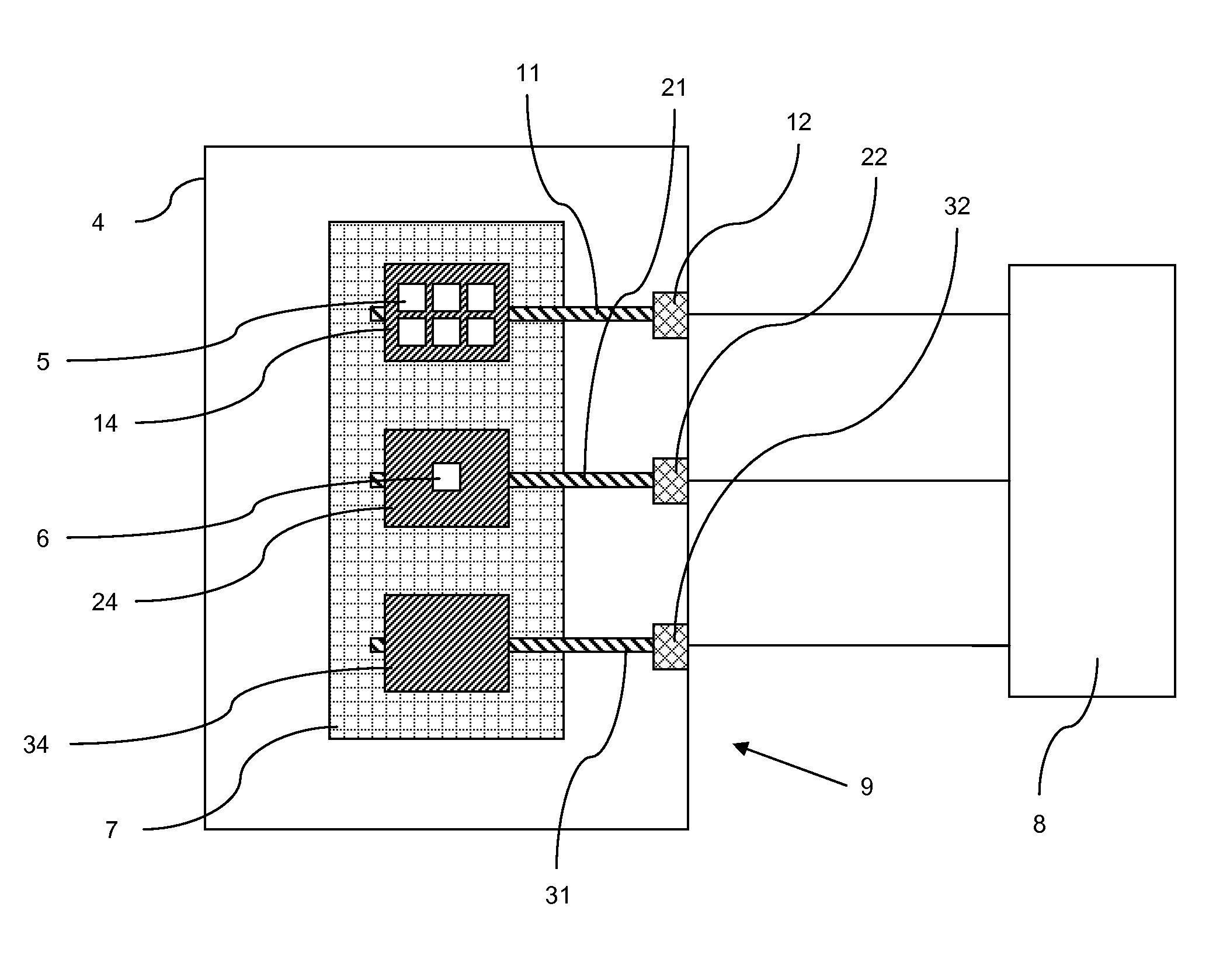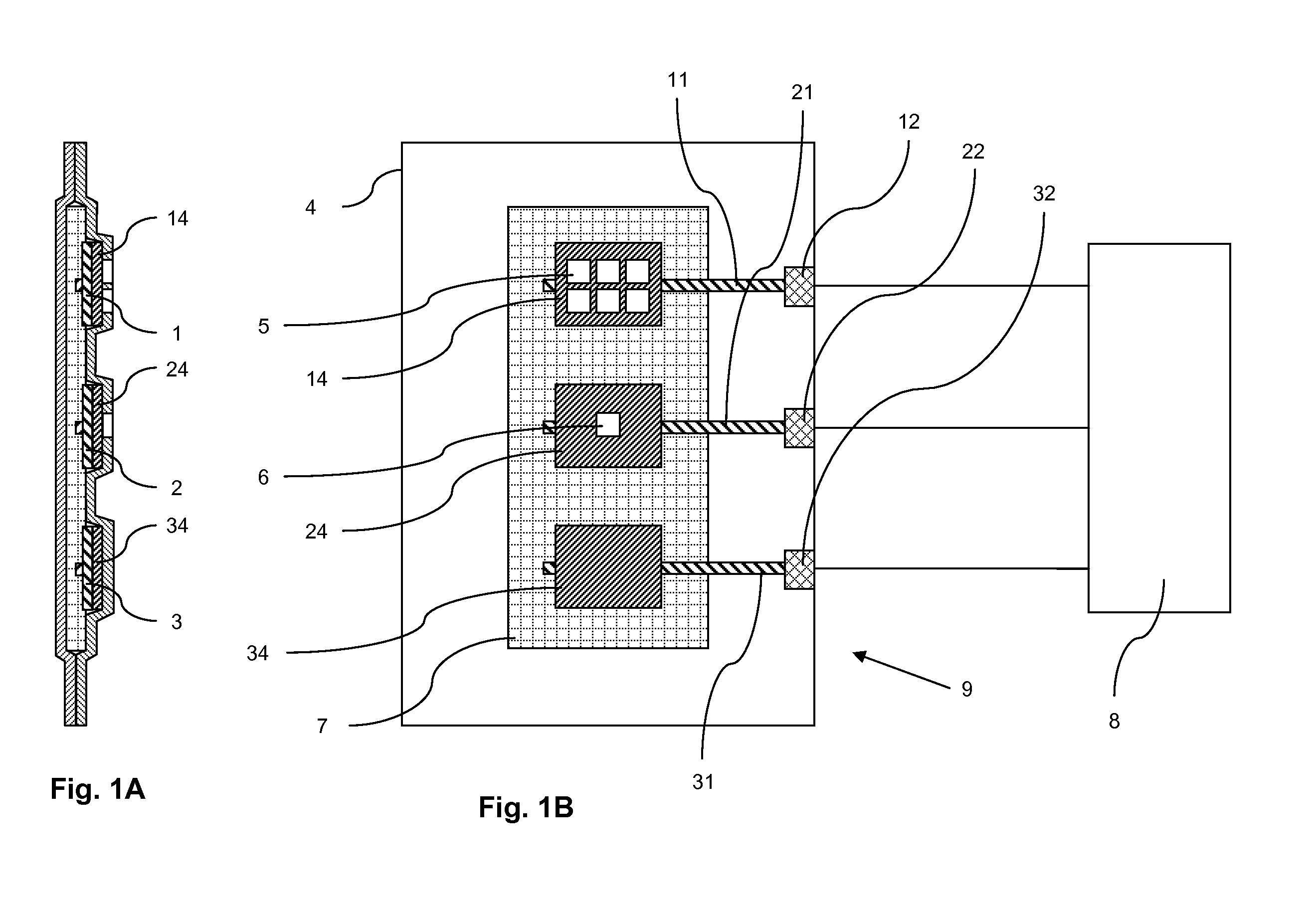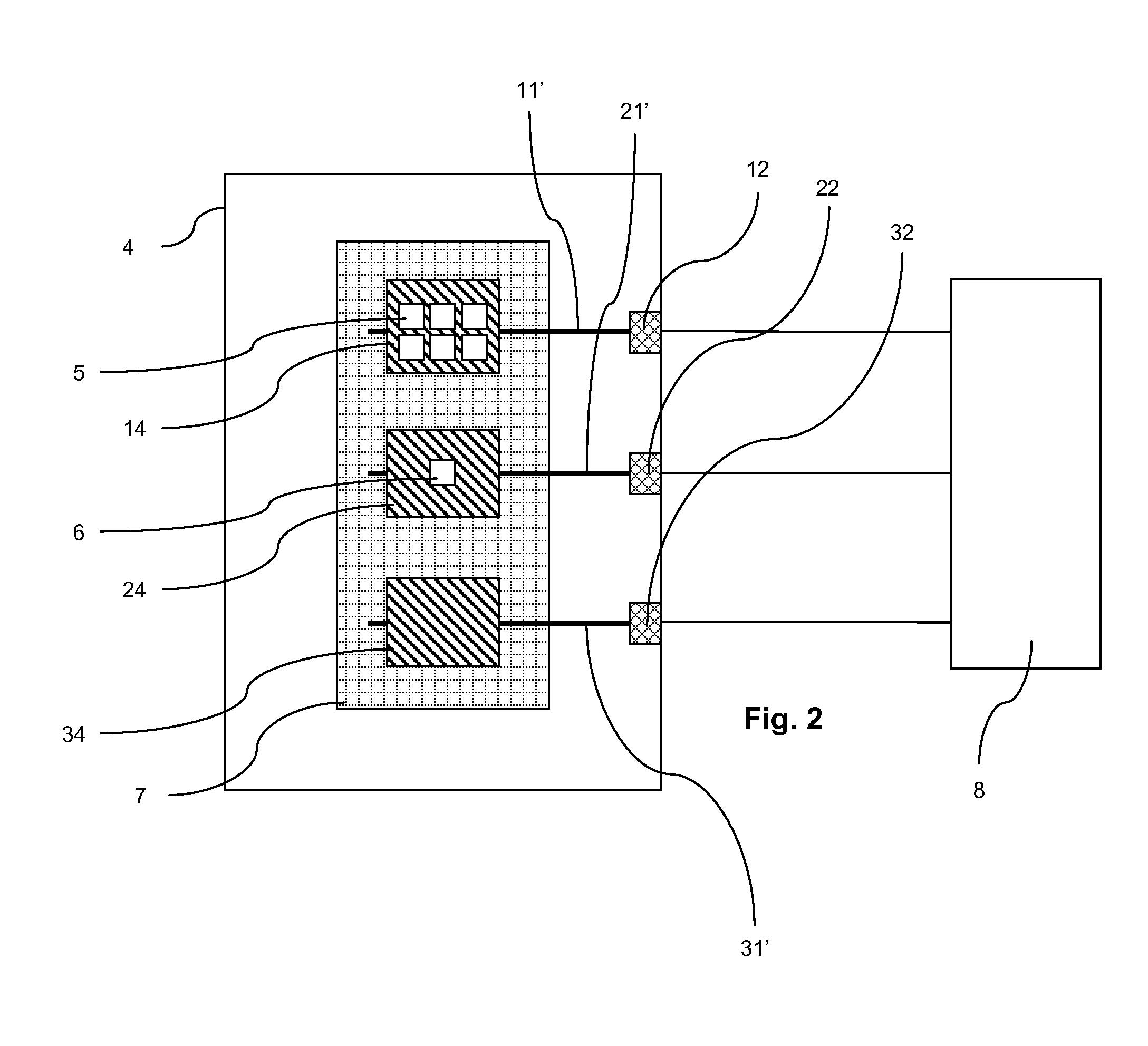Electrochemical gas sensor containing electric connection lines or housing contact bridges comprising carbon nanotubes
a carbon nanotube and gas sensor technology, applied in the field of electrochemical gas sensors, can solve the problems of reducing the cross sensitivity of materials in contact with electrolyte, oxidizing over time, and reducing the potential window
- Summary
- Abstract
- Description
- Claims
- Application Information
AI Technical Summary
Benefits of technology
Problems solved by technology
Method used
Image
Examples
Embodiment Construction
[0037]Referring to the drawings in particular, chip-like and planar, flat electrochemical gas sensors 9, whose housing 4 is formed by welded or laminated films comprising a plastic, are shown as examples each in FIGS. 1 through 3.
[0038]The electrochemical gas sensor 9 in FIG. 1B has a measuring electrode 1 comprising diamond-like carbon (DLC), a counterelectrode 2 comprising nickel, and a reference electrode 3 comprising platinum.
[0039]All electrodes 1, 2, 3 have perfluorinated polymer diffusion membranes 14, 24, 34.
[0040]The connection lines 11, 21, 31 comprising single wall carbon nanotubes (SWCNT), which are strip-shaped here, are located between the contact pads 12, 22 and 32 and the electrodes 1, 2, 3. The gas inlet openings 5 to the measuring electrode 1 and the gas outlet openings 6 to the counterelectrode 2 are formed by corresponding patterns in the upper housing film.
[0041]The electrolyte, especially an aqueous lithium bromide solution for the electrochemical detection rea...
PUM
| Property | Measurement | Unit |
|---|---|---|
| area | aaaaa | aaaaa |
| electrically conductive | aaaaa | aaaaa |
| electrically | aaaaa | aaaaa |
Abstract
Description
Claims
Application Information
 Login to View More
Login to View More - R&D
- Intellectual Property
- Life Sciences
- Materials
- Tech Scout
- Unparalleled Data Quality
- Higher Quality Content
- 60% Fewer Hallucinations
Browse by: Latest US Patents, China's latest patents, Technical Efficacy Thesaurus, Application Domain, Technology Topic, Popular Technical Reports.
© 2025 PatSnap. All rights reserved.Legal|Privacy policy|Modern Slavery Act Transparency Statement|Sitemap|About US| Contact US: help@patsnap.com



